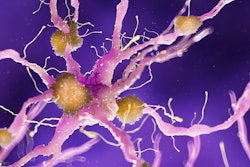MRI shows that people with post-traumatic stress disorder (PTSD) have a cerebellum about 2% smaller than adults without the condition, especially in areas that influence emotion and memory, according to a study published January 10 in Molecular Psychiatry.
The cerebellum coordinates movement and balance and influences emotion and memory. But it's unclear whether a smaller cerebellum makes a person vulnerable to PTSD or whether PTSD shrinks this particular brain region, noted a team led by Ashley Huggins, PhD, of the University of Arizona in Tucson. (The study was conducted under the auspices of the lab of psychiatrist Raj Morey, MD, at Duke University in Durham, NC.)
"[Our study found] differences … within the posterior lobe, where a lot of the more cognitive functions attributed to the cerebellum seem to localize, as well as the vermis, which is linked to emotional processing functions," Huggins said in a statement released by the university.
Previous studies have shown that the amygdala and the hippocampus are involved in PTSD, but less is understood about the cerebellum's role. And the brain region is important: Although it makes up only 10% of the brain's total volume, it consists of more than half of the brain's 86 billion nerve cells, the team explained.
The investigators explored the effect of PTSD on the cerebellum through a study that included 4,215 brain MRI exams; of these, a third had led to a PTSD diagnosis. Each image was analyzed with automated software, but it was also manually checked to ensure that the boundaries around the cerebellum and its subregions were accurate.
Huggins' group found that PTSD patients had cerebellums about 2% smaller than those without the condition, specifically in areas within the cerebellum that influence emotion and memory.
"When we looked at PTSD severity, people who had more severe forms of the disorder had an even smaller cerebellar volume," Huggins said.
The researchers hope that their work will help draw attention to how "the cerebellum is an important driver of complex behavior and processes beyond gait and balance, as well as a potential target for new and current treatments for people with PTSD," the university said in its statement.
"While there are good treatments that work for people with PTSD, we know they don't work for everyone," Huggins said. "If we can better understand what's going on in the brain, then we can try to incorporate that information to come up with more effective treatments that are longer lasting and work for more people."
The complete study can be found here.


.fFmgij6Hin.png?auto=compress%2Cformat&fit=crop&h=100&q=70&w=100)





.fFmgij6Hin.png?auto=compress%2Cformat&fit=crop&h=167&q=70&w=250)











